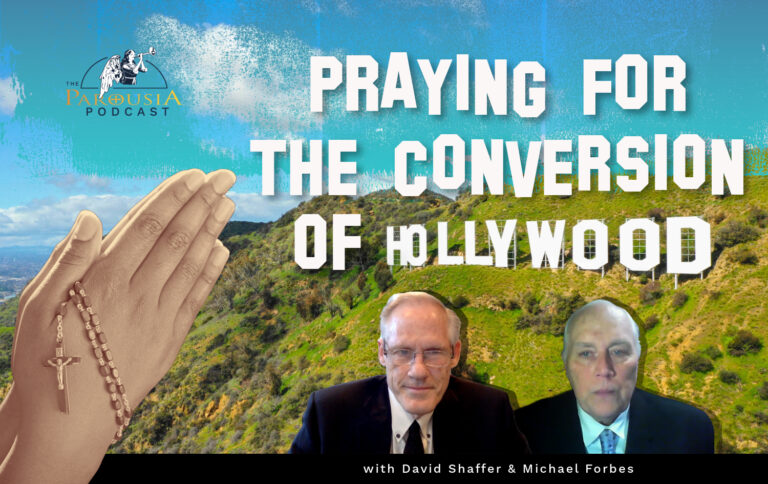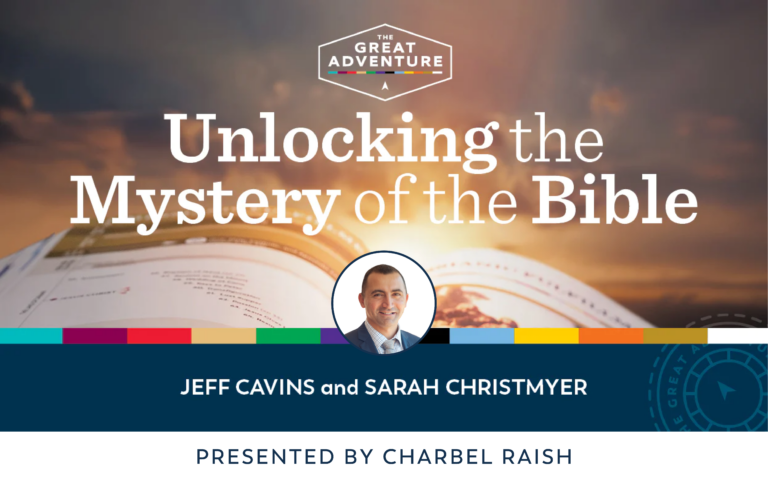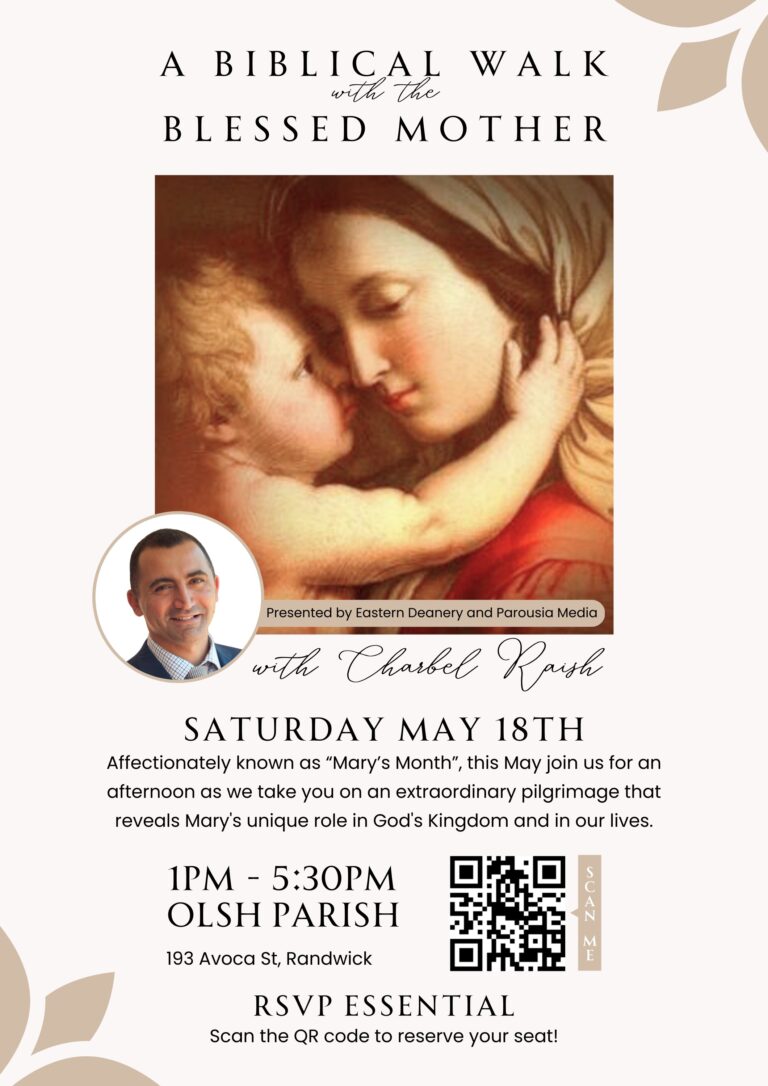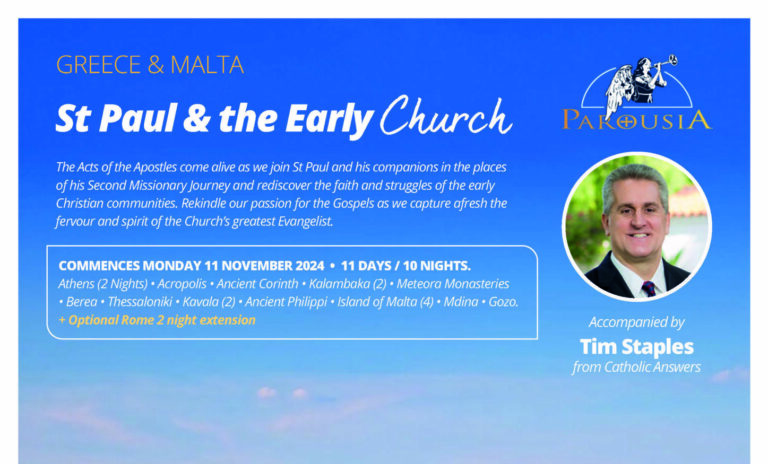The Dead Sea Scrolls and the Catholic Faith
In the winter of 1946, three Arab shepherds were tending their flocks along the northwestern shore of the Dead Sea. One of them was amusing himself by throwing rocks into the caves that dotted the limestone bluffs above the shoreline. He was startled, however, when one of his rocks produced the sound of shattering pottery. Climbing the cliffs a few days later to investigate, the shepherd entered the cave to find broken pottery and intact clay jars. One of the jars contained three leather scrolls, including a complete copy of the Book of Isaiah in Hebrew from the second century BC—about a thousand years older than any other Hebrew copy of a biblical book. This was the beginning of the discovery of the Dead Sea Scrolls, perhaps the most important archeological find of the twentieth century.
What the Dead Sea Scrolls Are 
The Dead Sea is a salt-water lake located in southeast Israel, at the lowest elevation on earth (about 1,400 feet below sea level). In the 1950s and 60s, Western scholars as well as other Bedouin tribesmen continued to search the northwest shore of the Sea—an area called “Qumran”—for more caves containing scrolls. In the end, eleven caves were found, containing fragments of almost a thousand different scrolls. About a quarter of these scrolls were copies of books of the Old Testament—the oldest copies ever discovered. The rest of the scrolls turned out to be religious writings composed or preserved by a Jewish sect called the “Essenes” (ES-seenz) who maintained a monastic community on the site from around 150 BC to about AD 70.
The Essenes
Scholars had known about the Essenes before, because at least three important ancient authors wrote of them (Josephus, Philo, and Pliny the Elder). According to these ancient writers, the Essenes were a strict sect of Jews known for their piety, study of Scripture, and austere lifestyle. Some of the Essenes lived in towns throughout the land of Israel, raising families in the midst of Jewish society; but others practiced celibacy and lived in all-male community at Qumran on the shores of the Dead Sea, and perhaps at other locations yet to be found. To Catholics, the Essenes would look similar to a religious community with a first and third order.
The Essenes were very concerned about the end times. They expected two Messiahs (one priestly, the other royal) to come at any time. Based on the prophet Isaiah’s famous cry “In the wilderness prepare the way of the Lord” (Isaiah 40:3), they believed the Messiah(s) would come to Jerusalem from the east, from the “wilderness” area at the north end of the Dead Sea.
The Essene men at Qumran lived a life of self-denial. They devoted themselves to prayer, the study of the Scriptures, and the work necessary to support themselves. They held their property in common and wore simple, undecorated clothing. They bathed frequently for cultic purity and the forgiveness of their sins, and joined together once each day for a common meal of bread and wine.

The Dead Sea Scrolls and the Catholic Faith
The Dead Sea Scrolls are significant to the Catholic Faith in four main areas: the text, canon, and interpretation of the Bible, and the background of Christian life and worship.
The Text of the Bible
The oldest complete hand-written copy (manuscript) of the Old Testament in the original language (Hebrew) dates from about AD 1000. Prior to the discovery of the Scrolls, scholars had only a few incomplete copies of the Hebrew Bible older than this, and almost nothing from before AD 700. The Dead Sea Scrolls, however, gave us complete or nearly complete copies of some biblical books from about a thousand years earlier. The Hebrew text is the basis of our English translations of the Old Testament. The Dead Sea Scrolls allow us to compare whether the Hebrew was changed, or corrupted, over a span of a thousand years. The main gist of the Scrolls discovery was this: no significant corruption of the Hebrew text has taken place. The words of the Old Testament we read today are virtually unchanged from the words of the Old Testament in the days of Jesus.
The Canon of the Old Testament
The canon is the list of inspired books. The canon of the Catholic Old Testament includes 46 books, but Protestants and Jews reject seven of these (the deuterocanonical book), giving 39.
A common criticism of the Catholic Church is that we do not use “the canon of Jesus’ day.” Protestants especially assume that “all Jews knew” which books were inspired in the days of Jesus, and later Catholic tradition “added” books to the Bible to give support for “unbiblical” doctrines like purgatory (see 2 Macc 12:44).
The Dead Sea Scrolls drive home the fact that the Jews in ancient times were not agreed about which books belonged in the Bible. The evidence from Qumran shows that the Essenes thought many books should be in the Bible, including non-biblical works like the Book of Jubilees and First Enoch, and possibly some deuterocanonical books like Tobit. Other historical sources teach us that the Pharisees had a smaller canon than the Essenes, while the Sadducees and Samaritans only considered the Books of Moses as inspired. Neither Protestants nor modern Jews have “the Jewish canon of Jesus’ day.” The truth of the matter is, ancient Jews could not agree on which books were from God. They needed the Messiah to clarify this issue. As Catholics, we believe the Messiah did come, and by word and example taught the Apostles which books were from God and which were not. The example of our Lord was passed down in the Tradition of the Church, and finally committed to writing in the official lists of the biblical books drawn up by Church councils at the end of the 300s and early 400s. These ancient councils were confirmed by the Ecumenical Councils of Florence (1441) and Trent (1563).

The Interpretation of Scripture
The Dead Sea Scrolls help clarify the interpretation of many passages of Scripture, especially in the New Testament. For example, St. Paul frequently uses the phrase “works of the law” in his Epistle to the Galatians (2:16, 3:2,5,10). What does the phrase mean? Luther thought “works of the law” meant any good works. Aquinas thought it meant the ceremonial laws of the Old Testament. Who’s right? The only occurrence of the phrase “works of the law” in ancient literature outside of St. Paul has been found in the Dead Sea Scrolls, in a document called “4QMMT.” This document is a letter apparently from the Qumran Essenes to the Pharisees in Jerusalem concerning the “works of the law.” What are the “works of the law” listed in this letter? Things like the proper ways to handle liquids, skin diseases, and animal hides to avoid ritual uncleanness. These ceremonial practices were apparently called “works of the law” by ancient Jews, including St. Paul. It looks like Aquinas was right.
The Background of Christian Life and Practice
Many of the features of communal life among the Essenes at Qumran would seem strikingly familiar to Catholics. The men of Qumran placed a high value on religious celibacy. Prospective members went through a long period of training and testing comparable to the catechumenate, or perhaps postulancy and notivitiate. They lived by a written rule, as later Christian communities would (think of The Rule of St. Benedict). The community had three ranks of religious leadership comparable to bishops, priests, and deacons. They practiced water bathing for forgiveness and celebrated a meal of bread and wine which looked forward to the coming of the Messiah(s).
However, most scholars agree that it is unlikely the early Church copied very much, if anything, directly from the Essenes. Then what accounts for the similarity? Both the Church and the Essenes were meditating on Scripture. The Essenes show that it was possible, by prayerful meditation on the Old Testament, to guess in advance many features of the New Covenant the Messiah would bring. In fact, the men at Qumran believed they were already living a foretaste of the New Covenant; and in a sense, we might say they were. The example of the Essenes confirms the teaching of the Church Fathers that “the New was in the Old contained; the Old is in the New explained.”

 Dr. Bergsma has a 1 hour CD on the Dead Sea Scrolls available on our online store here.
Dr. Bergsma has a 1 hour CD on the Dead Sea Scrolls available on our online store here.
You can find out more about Dr. Bergsma at www.JohnBergsma.com or here.
You can get a copy of Dr. John Bergsma’s book ‘Bible Basics for Catholics‘ on our online store too.










Recent Comments